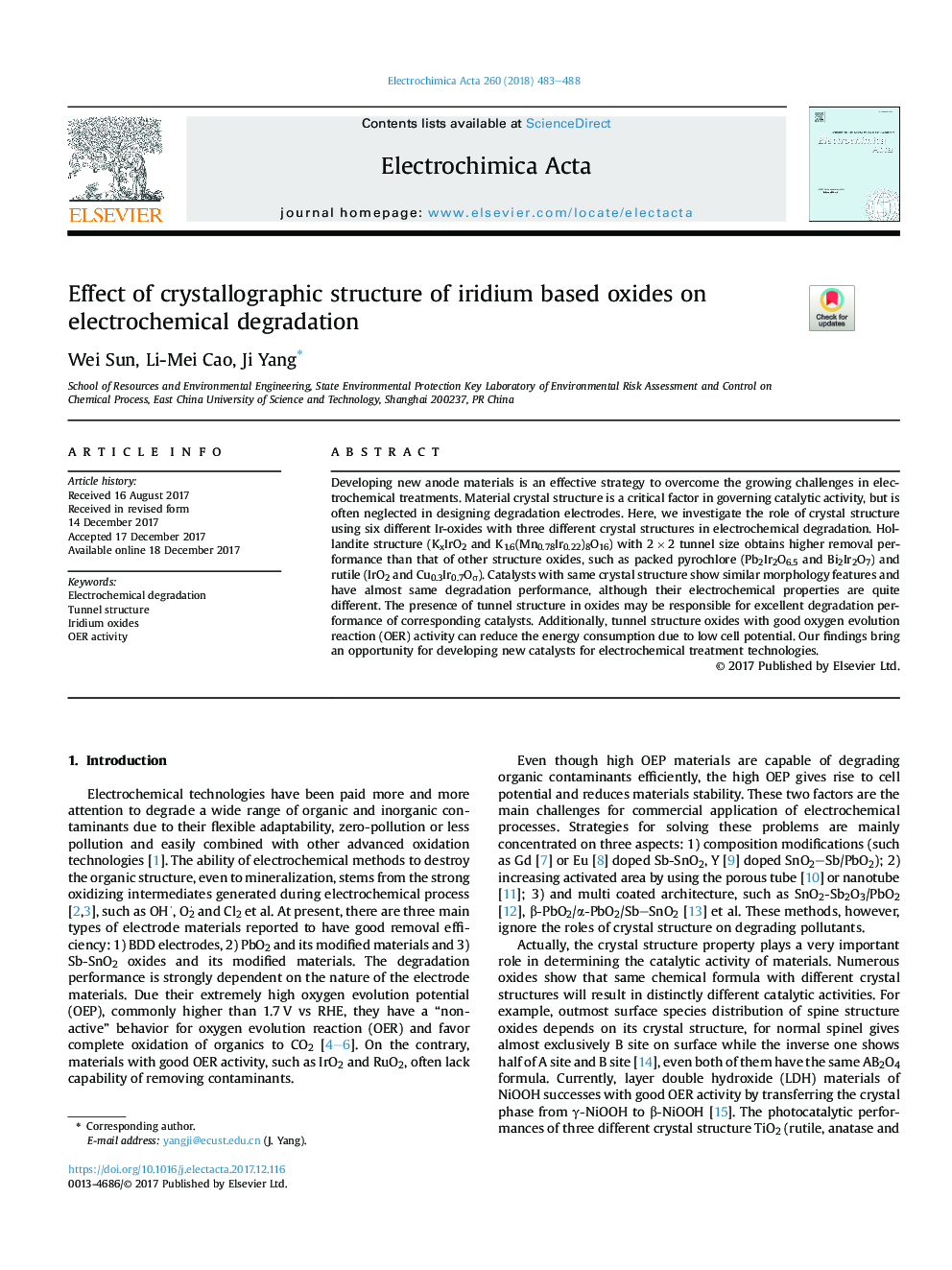| Article ID | Journal | Published Year | Pages | File Type |
|---|---|---|---|---|
| 6604838 | Electrochimica Acta | 2018 | 6 Pages |
Abstract
Developing new anode materials is an effective strategy to overcome the growing challenges in electrochemical treatments. Material crystal structure is a critical factor in governing catalytic activity, but is often neglected in designing degradation electrodes. Here, we investigate the role of crystal structure using six different Ir-oxides with three different crystal structures in electrochemical degradation. Hollandite structure (KxIrO2 and K1.6(Mn0.78Ir0.22)8O16) with 2â¯Ãâ¯2 tunnel size obtains higher removal performance than that of other structure oxides, such as packed pyrochlore (Pb2Ir2O6.5 and Bi2Ir2O7) and rutile (IrO2 and Cu0.3Ir0.7OÏ). Catalysts with same crystal structure show similar morphology features and have almost same degradation performance, although their electrochemical properties are quite different. The presence of tunnel structure in oxides may be responsible for excellent degradation performance of corresponding catalysts. Additionally, tunnel structure oxides with good oxygen evolution reaction (OER) activity can reduce the energy consumption due to low cell potential. Our findings bring an opportunity for developing new catalysts for electrochemical treatment technologies.
Related Topics
Physical Sciences and Engineering
Chemical Engineering
Chemical Engineering (General)
Authors
Wei Sun, Li-Mei Cao, Ji Yang,
